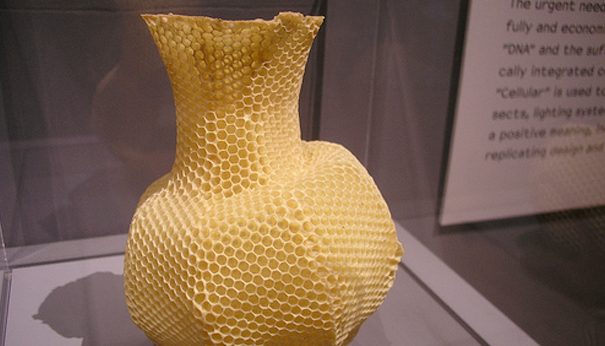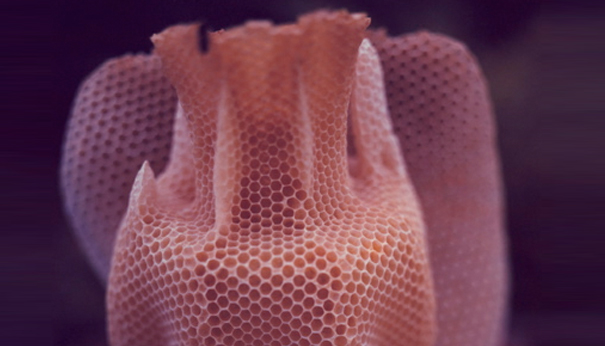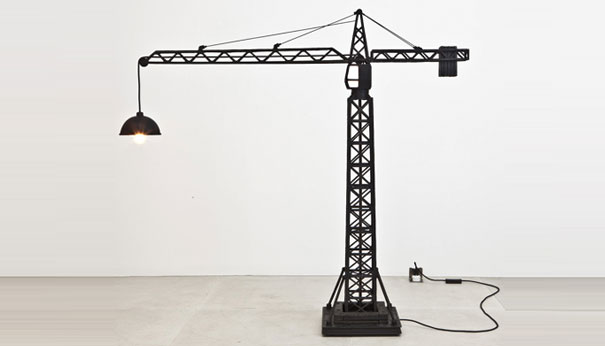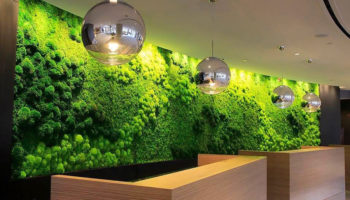Slow-Prototyping and the Secret Life of Bees
"Most people don’t have any idea about all the complicated life going on inside a hive. Bees have a secret life we don’t know anything about," from The Secret Life of Bees. The Honeycomb vase, a collaboration between Tómas Gabzdil Libertiny, a young Slovakian product designer, and approximately 40,000 bees, is publicizing their combined design effort within the world of art and design.
Honeycomb Vase. Designed by Tómas Gabzdil Libertiny.
Libertiny conceptualized the vase which was then developed and built by these 40,000 odd honeybees, who spent their time, per usual, creating the lattice of hexagonal cells known as the honeycomb. "Beeswax comes from flowers and, in the form of a vase, it ends up containing flowers before they die," Libertiny says. "It's a beautiful story." The vase began an exploration on the relationship between design and nature, and with material and form decided upon, Libertiny questioned how nature could contribute, beyond the material itself. He built a vase-shaped space and inserted it within a beehive, along with a video-camera to film the process. "The bees worked like a prototyping machine," says Libertiny. "Slowly, layer by layer, they add tiny bits of beeswax." They spent about a week on each one, and produced a total of a dozen vases, each entirely different.


The vase was on display at MoMA's exhibit, Design and the Elastic Mind last spring, which explored the relationship between science and design. This upcoming summer, the vase will be one of approximately 50 products showcased in Telling Tales: Fantasy and Fear in Contemporary Design at the V&A, exploring the recent trend among European designers for limited edition pieces that push the boundaries between art and design. The objects share common themes such as fantasy, parody and a concern with morality. In April 2007, the vase was introduced at the Milan Furniture Fair.
Libertiny isn’t the only designer who is “outsourcing the production of his work” to bees. Hilary Berseth’s Programmed Hives (sculptures) take a similar approach to design. "I knew they were ordered and regimented," says the artist about his honeybees. "I had an intuition that I'd be able to organize that, architecturally." "You can plan out a certain amount of what's going to happen, and then that design will sort of ripple through, and then they'll begin to draw out combs and riff off that design." Their work is much less expensive than rapid-prototyping machine, though it does have its downfalls, "I have been stung a couple of times. And I swell up like a son of a bitch." It is also a bit slower.
The hexagonal cells of the honeycomb have long been seen as something beautiful and noteworthy within contemporary design: from chairs to lamps and wall panels. Libertiny and Berseth are using not only the honeycomb, but the honeycomb’s original innovators as well.




Leave a Reply